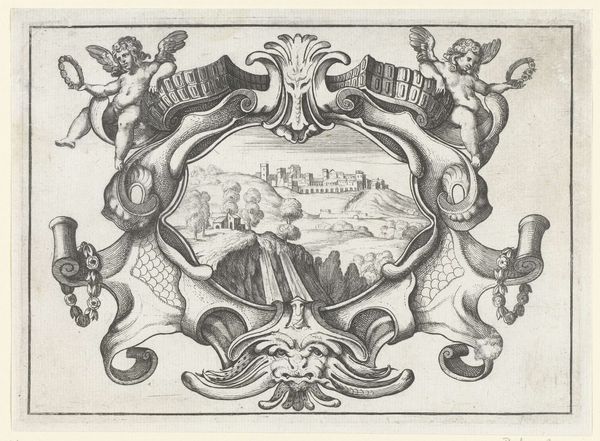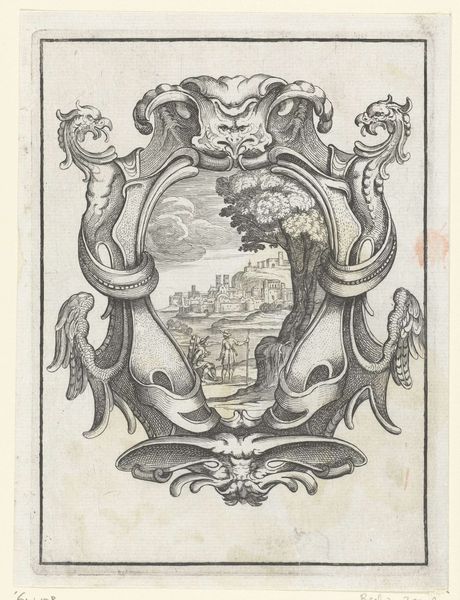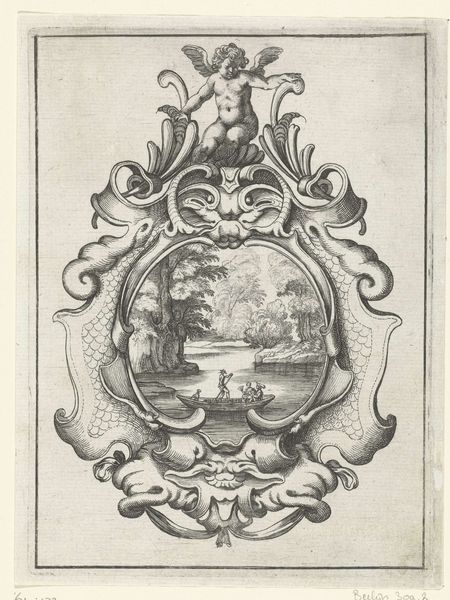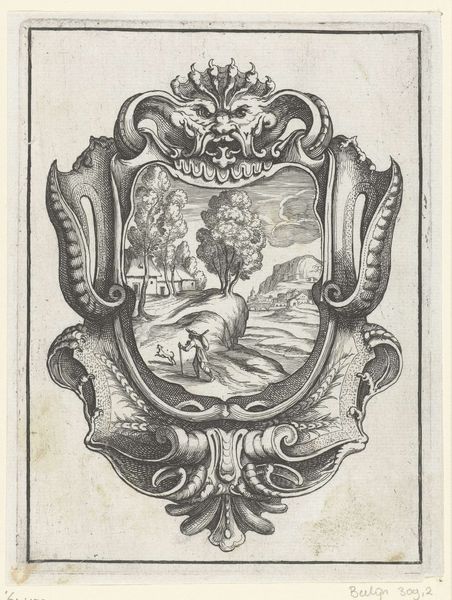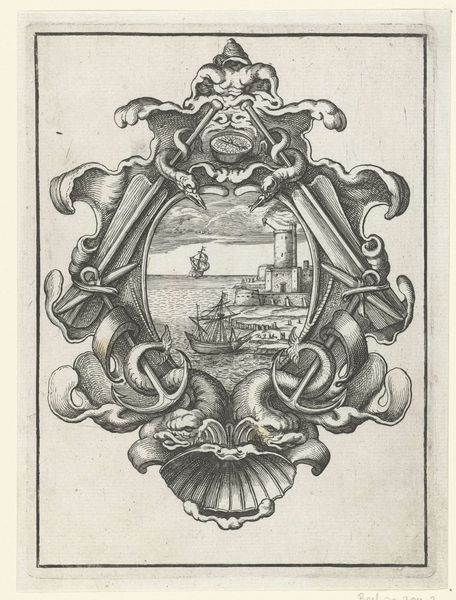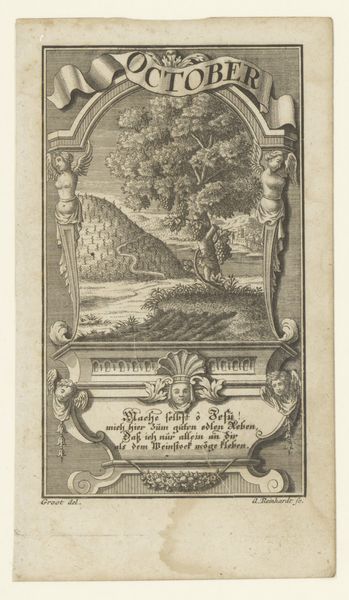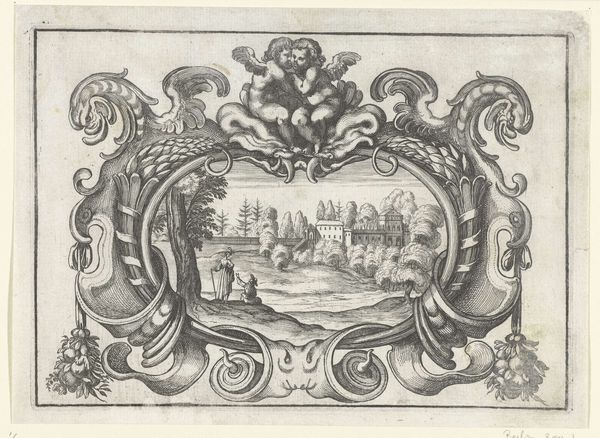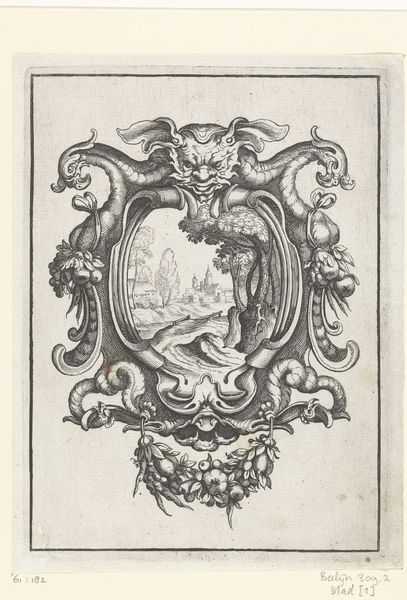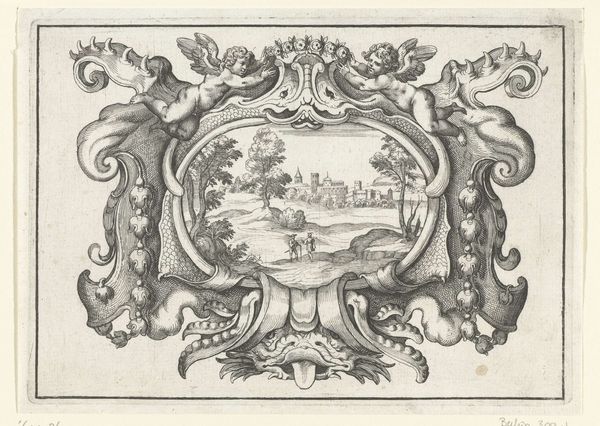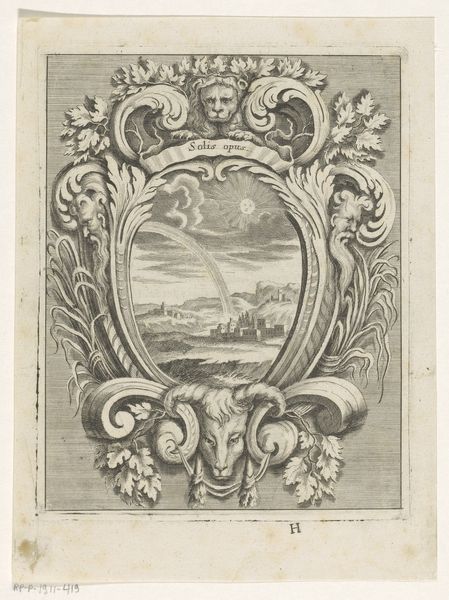
print, engraving
#
baroque
# print
#
landscape
#
engraving
Dimensions: height 173 mm, width 130 mm
Copyright: Rijks Museum: Open Domain
Curator: Looking at this 1632 engraving by Daniel Rabel titled "Cartouche met schelp en vissenkop", the first thing that strikes me is how the serenity of the central landscape is at odds with the grotesque faces surrounding it. Editor: Indeed, there’s an immediate visual tension. The landscape itself, with the figures on the canal, is rather placid. But then this bizarre, elaborate frame – dragons, masks – it almost seems like it’s containing something. It’s as if the artist is saying, “Beauty exists, but it's always framed, or threatened, by the grotesque.” Curator: I think the 'grotesque' label may be too reductive here. I'd describe it more as a representation of primal forces. Look at the shell, the fish heads…they’re aquatic motifs suggesting the untamed power of nature, its mysteries. It reminds me of alchemical symbols where bestial forms often stand for transformative processes. The cartouche acts as a portal of sorts, merging the mundane landscape within the chaos outside. Editor: An interesting perspective. But for whom was this portal intended? Considering the Baroque era’s political landscape, this piece can also be interpreted through the lens of power. The elite class, nestled safely in their idealized landscapes, while monstrous forces, represented by these caricatures, might reflect societal anxieties, fears of upheaval. The common person is out there trying to cross the water, while beasts on the other side wait for something… Curator: While that might be part of it, I can't quite agree to apply a purely cynical read here. Don’t forget that grotesque ornament, while sometimes hinting at instability, was also admired for its ingenuity, its imagination, and how it reveals nature’s latent power in odd combinations and mutations. Perhaps these decorative elements are meant to provoke wonder, a celebration of life in all its strange manifestations. Editor: It's a compelling thought. Ultimately, whether it’s a subconscious cry for stability amidst chaos, or simply an exploration of strange, intertwined beauties, Rabel’s creation gives the beholder something fascinating to unpack about 17th century art. Curator: Absolutely. The engraving is far more than meets the eye and its symbolism will continue to resonate in surprising ways for generations to come.
Comments
No comments
Be the first to comment and join the conversation on the ultimate creative platform.

